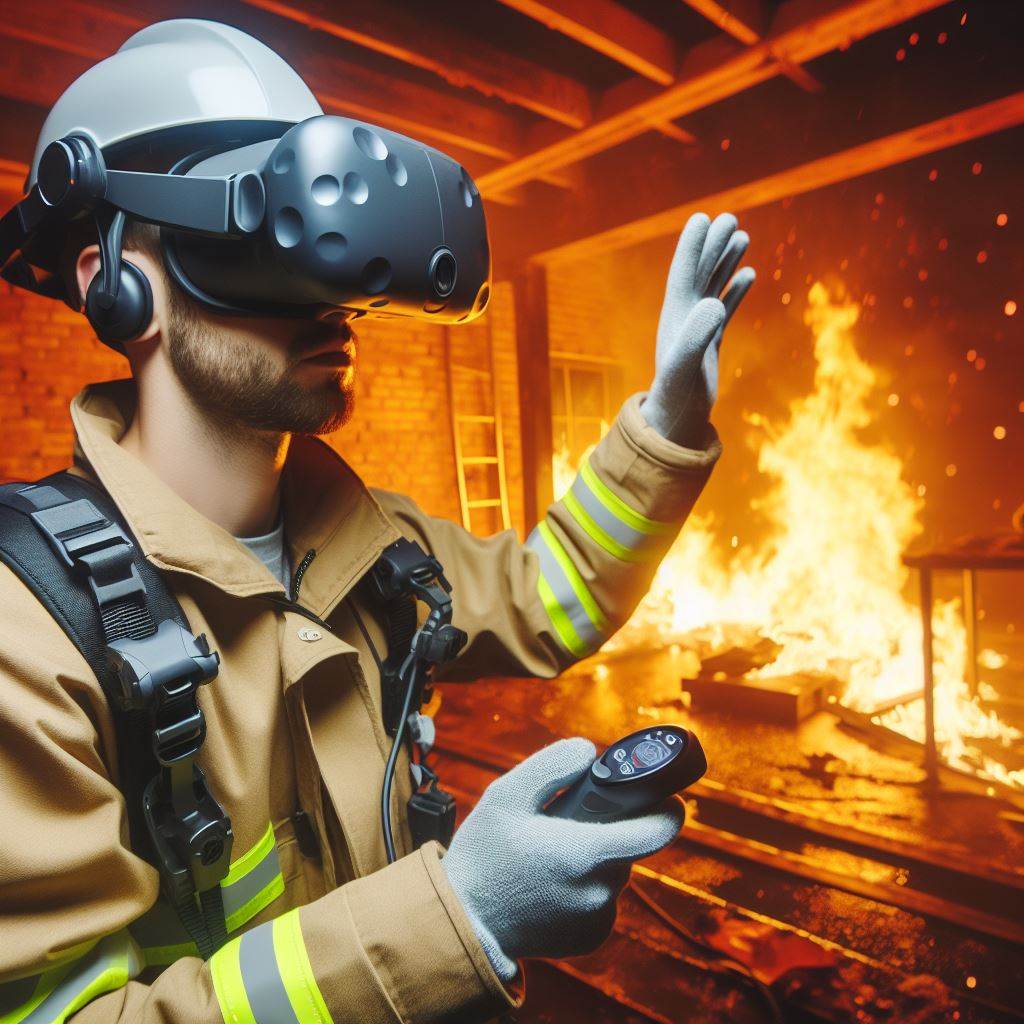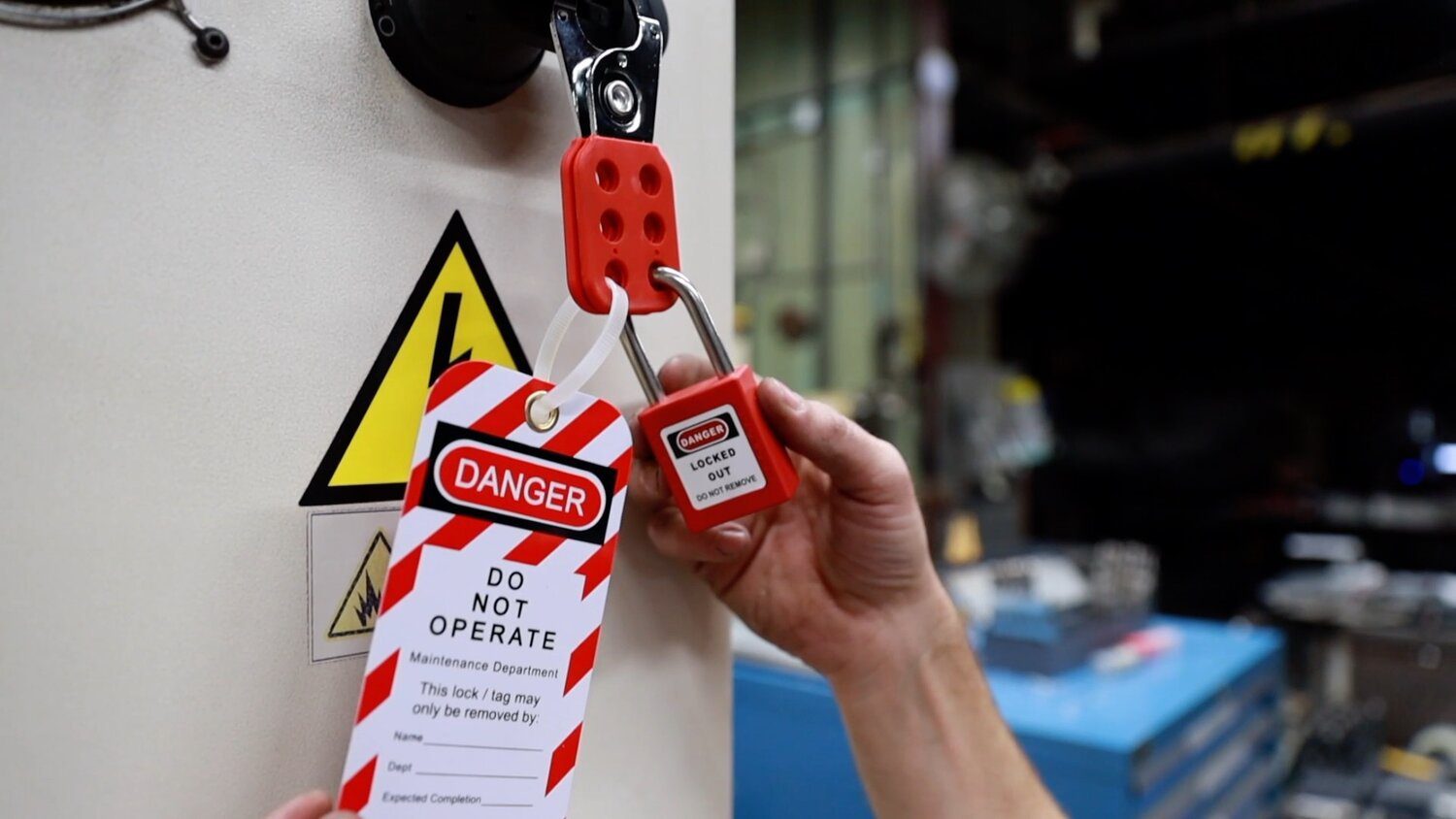Elevating Safety Training with Virtual Reality (VR)
In today’s industrial landscape, the safety of workers remains paramount. Traditional safety training methods have always been based on classroom instructions. But it looks like Virtual Reality (VR) is becoming the new standard, offering an immersive and interactive approach.

Traditional safety training methods, such as classroom instruction, written materials, and hands-on practice, have been instrumental in preparing workers for safety challenges. However, these methods have their downsides:
- Cost Implications: The financial burden of traditional training is significant, often necessitating substantial investment in physical space, equipment, and instructors. For organizations spread across multiple locations, the travel and accommodation costs for trainees can quickly accumulate.
- Ineffectiveness in Risk Simulation: Simulating real-life hazardous scenarios in a safe and effective manner is a challenge for conventional training methods. This limitation can lead to a disconnect between the training environment and the practical application of learned skills.
- One-Size-Fits-All Approach: The diverse learning paces and styles of individuals are often not accommodated in traditional training, potentially leading to uneven skill acquisition and retention among trainees.
Effectiveness of VR in Safety Training
The integration of VR into safety training has marked a significant improvement in the effectiveness of learning outcomes. Employees trained with VR can complete their training up to four times faster than their counterparts in traditional settings. They also exhibit a 275% increase in confidence when applying the skills they’ve learned. Engagement with VR content is 375% higher compared to classroom learning, and focus levels are quadrupled in comparison to e-learning peers.
A case study involving miners trained in VR to recognize and react to safety hazards showed a 43% reduction in injury-related downtime, highlighting the profound impact of VR on both safety enhancement and the enjoyment of the learning experience. Moreover, VR technology, when scaled, can be more cost-effective than traditional classroom training, presenting a compelling case for its adoption in efficient and impactful training solutions.
The immersive nature of VR training provides numerous benefits, including enhanced retention of safety protocols, a safe environment for emergency response practice, and improved risk assessment skills. These advantages contribute to a well-prepared workforce capable of maintaining high safety standards.
Several research studies have highlighted the benefits of VR over traditional classroom training:
- Efficiency: A study from PwC demonstrated a 400% reduction in time required for training when using VR compared to traditional classroom-based learning1.
- Engagement: VR provides an immersive and interactive experience, leading to 375% higher engagement compared to classroom learning1.
- Skill Retention: VR training has been shown to enhance knowledge retention and practical skill application. For instance, a study involving miners trained in VR showed a 43% reduction in injury-related downtime1.
- Cost-Effectiveness: When scaled, VR technology can be more cost-effective than traditional classroom training1.
- Customization: VR allows for the creation of tailored training scenarios, accommodating diverse learning paces and styles2.
- Realistic Risk Simulation: VR enables the simulation of real-life hazardous scenarios in a safe and effective manner, bridging the gap between the training environment and the practical application of learned skills3.
In conclusion, the integration of VR into safety training programs presents a compelling case for its adoption, given its proven benefits in efficiency, engagement, skill retention, cost-effectiveness, customization, and risk simulation.
Implementing VR Safety Training: 5 steps to get started
- Assess Your Training Needs: Evaluate the specific safety training requirements of your organization.
- Identify the areas where VR can have the most significant impact, such as high-risk tasks or procedures that are difficult to replicate in real life.
- Select the Right VR Technology: Research and choose the VR hardware and software that best suits your training needs. Consider factors like compatibility, user-friendliness, and the ability to customize scenarios.
- Develop Custom Training Scenarios: Work with VR content developers or use in-house expertise to create tailored training scenarios. Ensure these scenarios are relevant to the actual working conditions and risks your employees face.
- Train Your Trainers: Educate your safety trainers on how to effectively use VR technology. They should be comfortable with operating the equipment and guiding employees through the VR training modules.
Evaluate and Iterate: After implementing VR training, regularly assess its effectiveness. Gather feedback from trainees and trainers, and use this information to refine and improve the training modules.
Real-World Applications of VR in Safety Training
VR technology is being applied in various safety training scenarios, each tailored to address specific industry needs:
- Working at Height: VR training simulates roof sheeting work and other height-related tasks, allowing workers to practice using PPE and fall prevention techniques in a controlled virtual environment.
- Confined Space: Trainees experience realistic confined space scenarios, learning to identify hazards, follow emergency protocols, and use safety equipment without the real-world risks.
- Machine Guarding: Workers learn correct machine guarding techniques, including the installation of safety barriers and the importance of regular maintenance, through VR simulations.
- Lockout Tagout (LOTO): VR provides interactive simulations for practicing LOTO procedures, emphasizing the accurate identification and isolation of hazardous energy sources and the correct application of safety devices.

Conclusion: New powerful tool for Safety Training
Virtual Reality (VR) safety training is a forward-thinking approach that enhances engagement, knowledge retention, and practical skill application. As VR technology continues to evolve, its role in professional development and training is set to expand, offering organizations a powerful tool to enhance their safety training initiatives.
References
The following scholarly articles and industry reports validate the efficacy of VR in safety training and provide additional resources for interested readers:
- “Evaluating the effectiveness of virtual reality for safety-relevant training: a systematic review”1.
- “Virtual Reality for Safety Training: A Systematic Literature Review and Meta-Analysis”2.
- “Towards Design Principles for Safety Training in Virtual Reality”3.
- “VR-based health and safety training in various high-risk engineering industries”4.
These resources provide valuable insights into the benefits and effectiveness of VR safety training, further strengthening the case for its adoption in safety training initiatives. As we continue to explore and understand the potential of VR, it’s clear that this technology will play a pivotal role in shaping the future of safety training.
